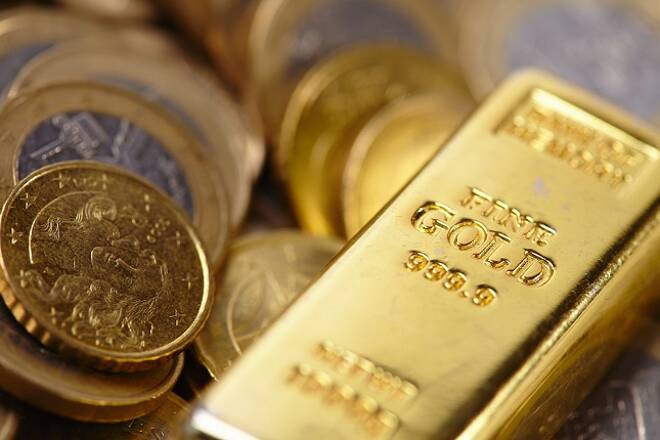Advertisement
Advertisement
Price of Gold Fundamental Daily Forecast – Tensions Simmering in Middle East, Russia
By:
With U.S. Treasury yields tumbling and demand for risky assets waning, gold could remain underpinned all session. Additionally, the simmering tensions in the Middle East could trigger another price surge if they escalate.
Gold futures are trading higher shortly after the regular session opening on Wednesday amid renewed concerns over U.S. – China trade relations as both economic powerhouses prepare to sign an initial trade deal later today. Global investors are trimming risky positions and moving money into gold as an alternative investment.
Investors are being rattled by comments from U.S. Treasury Secretary Steven Mnuchin, who said on Monday that tariffs on Chinese goods will be in place until the completion of a Phase 2 agreement. He also added that this may not take place until after the 2020 U.S. presidential elections.
At 13:33 GMT, February Comex gold is trading $1550.50, up $6.10 or +0.39%.
On Tuesday, gold finished lower, but well above its low after prices rebounded following a two-week low at $1536.40. This was slightly above the major value zone at $1533.20 to $1514.30.
Phase One US-China Trade News
U.S. President Donald Trump is slated to sign the Phase One trade agreement with Chinese Vice Premier Liu He at the White House at 16:30 GMT.
Washington has already agreed to suspend tariffs on $160 billion of some Chinese-made electronics, and to halve existing tariffs on $120 billion of other goods to 7.5%. But the U.S. will leave in place 25% tariffs on a vast, $250 billion array of Chinese industrial goods and components used by U.S. manufacturers.
US Producer Prices Barely Rise in December
At 13:30 GMT, the U.S. Labor Department said its producer price index (PPI) for final demand ticked up 0.1% last month after being unchanged in November. In the 12 months through December, the PPI increased 1.3% after gaining 1.1% in November.
Economists polled by Reuters had forecast the PPI climbing 0.2% in December and advancing 1.3% on a year-on-year basis.
Excluding the volatile food, energy and trade services components, producer prices also nudged up 0.1% in December after being unchanged in November. The so-called core PPI rose 1.5% in the 12 months through December after increasing 1.3% in November.
Daily Forecast
Traders showed little reaction to the U.S. PPI data, while remaining focused on U.S.-China trade relations and the extended tariffs.
Helping to underpin prices are comments from Iranian President Hassan Rouhani. He lashed out at the U.S. and Europe for its presence in the Middle East and for what he described as the latter’s failure in upholding the 2015 Iranian nuclear deal.
In breaking news that could have a positive effect on prices, Russia’s government has resigned, according to the state news agency Tass who cited the Russian Prime Minister Dmitry Medvedev.
With U.S. Treasury yields tumbling and demand for risky assets waning, gold could remain underpinned all session. Additionally, the simmering tensions in the Middle East could trigger another price surge if they escalate.
About the Author
James Hyerczykauthor
James Hyerczyk is a U.S. based seasoned technical analyst and educator with over 40 years of experience in market analysis and trading, specializing in chart patterns and price movement. He is the author of two books on technical analysis and has a background in both futures and stock markets.
Advertisement
